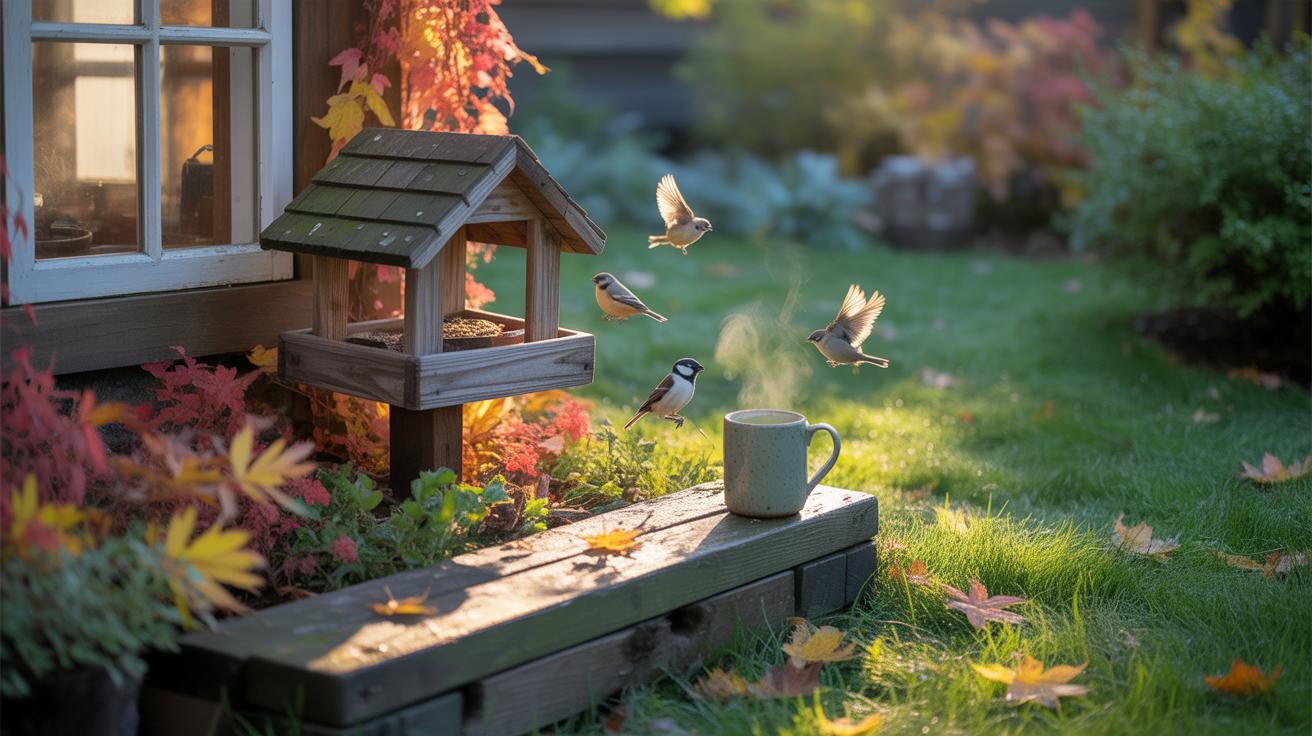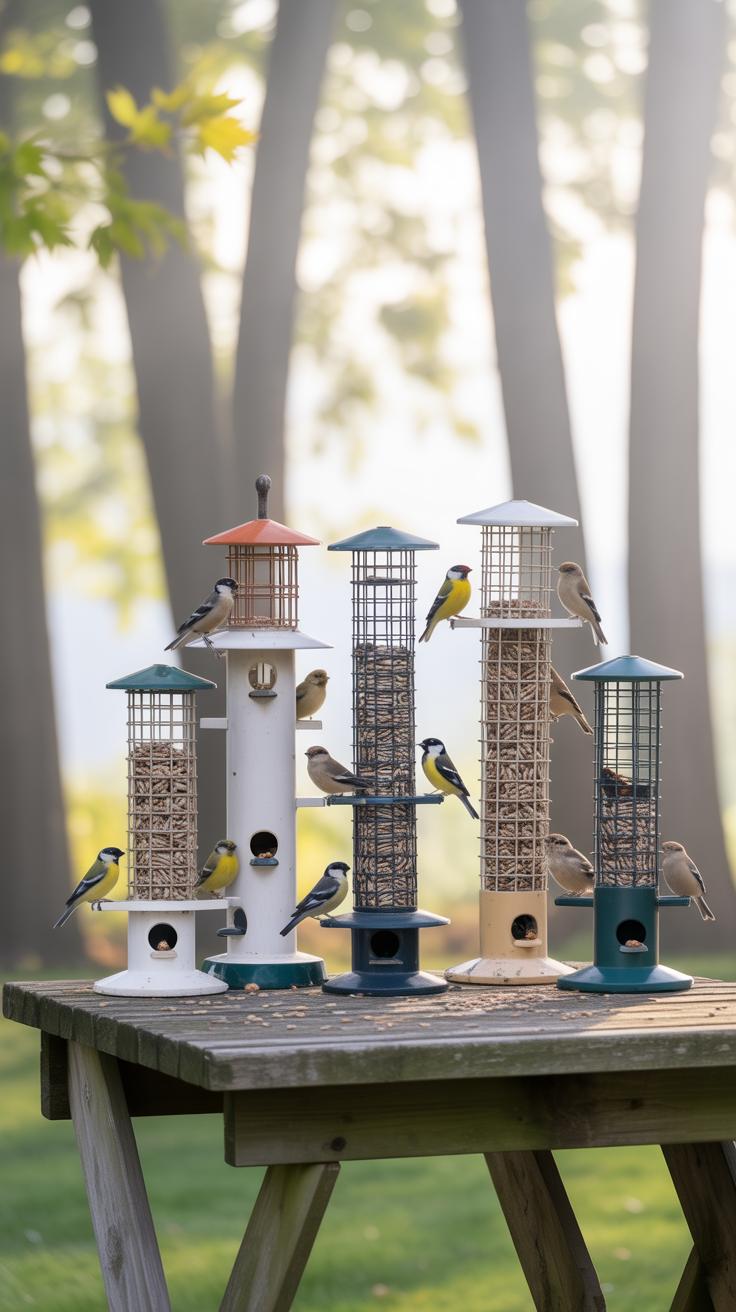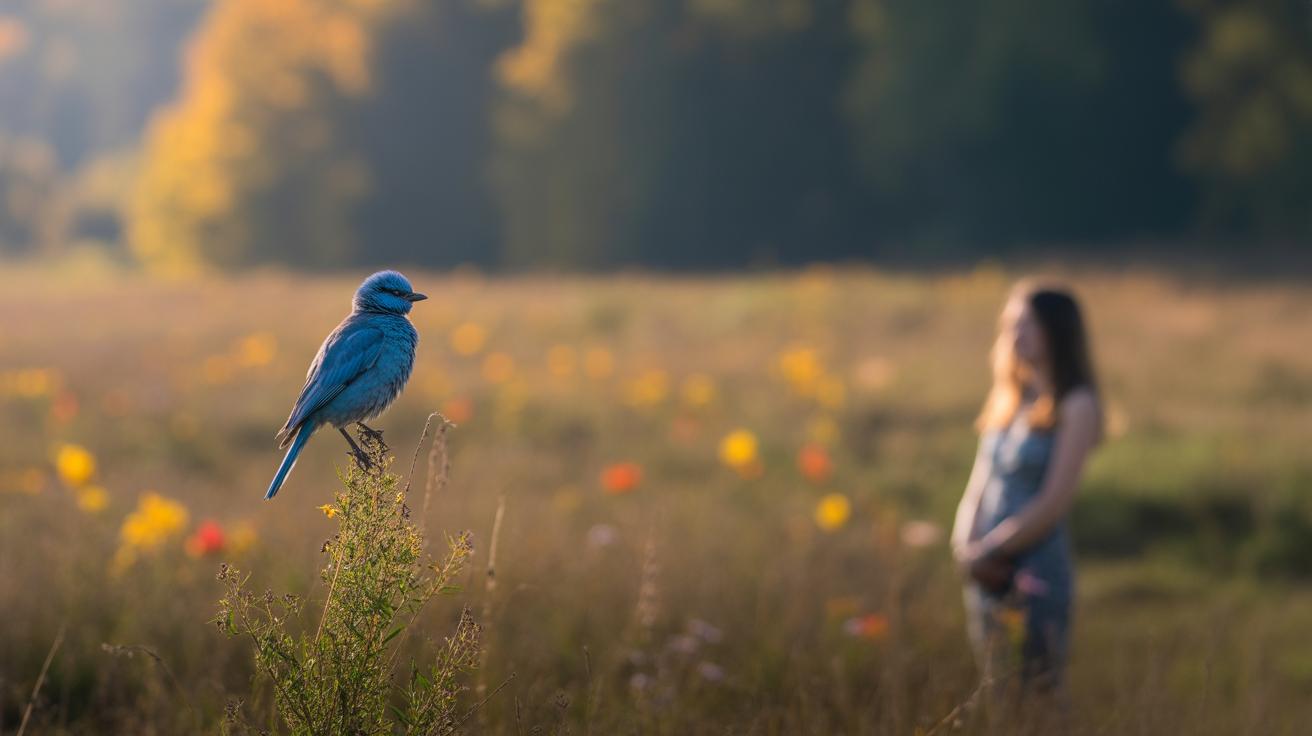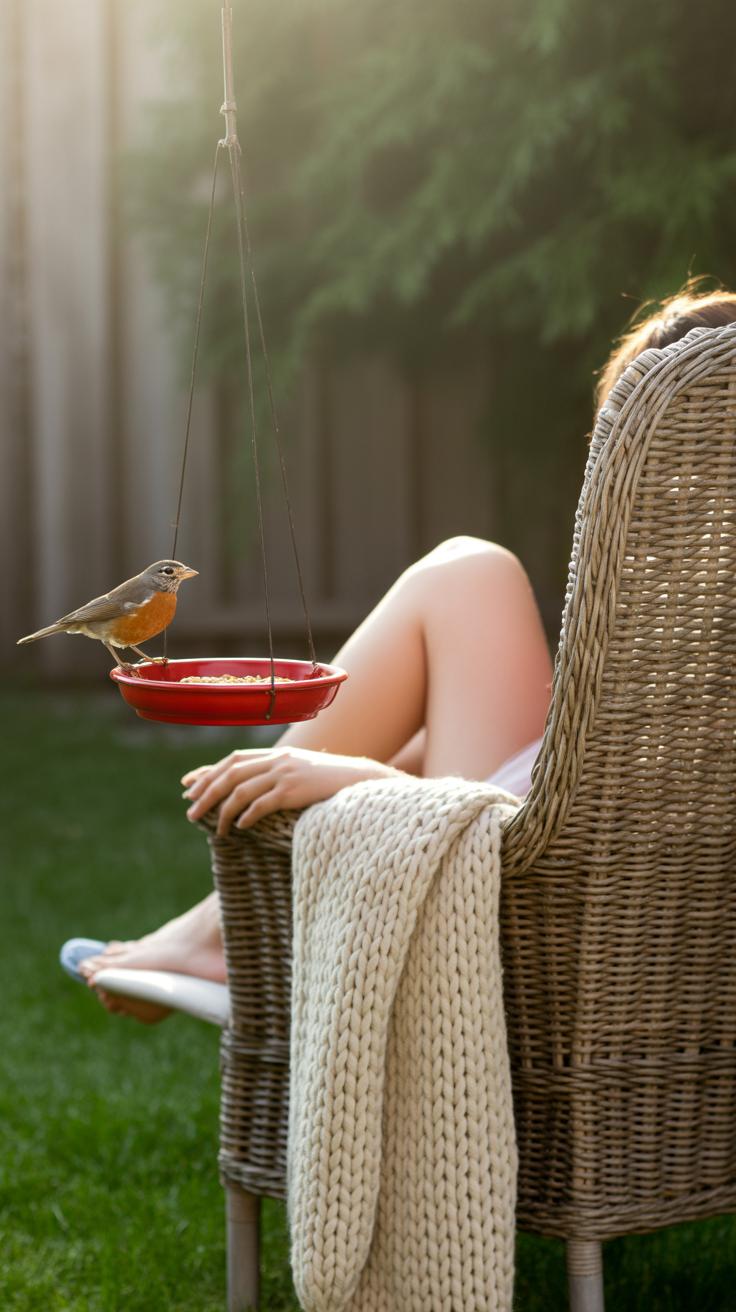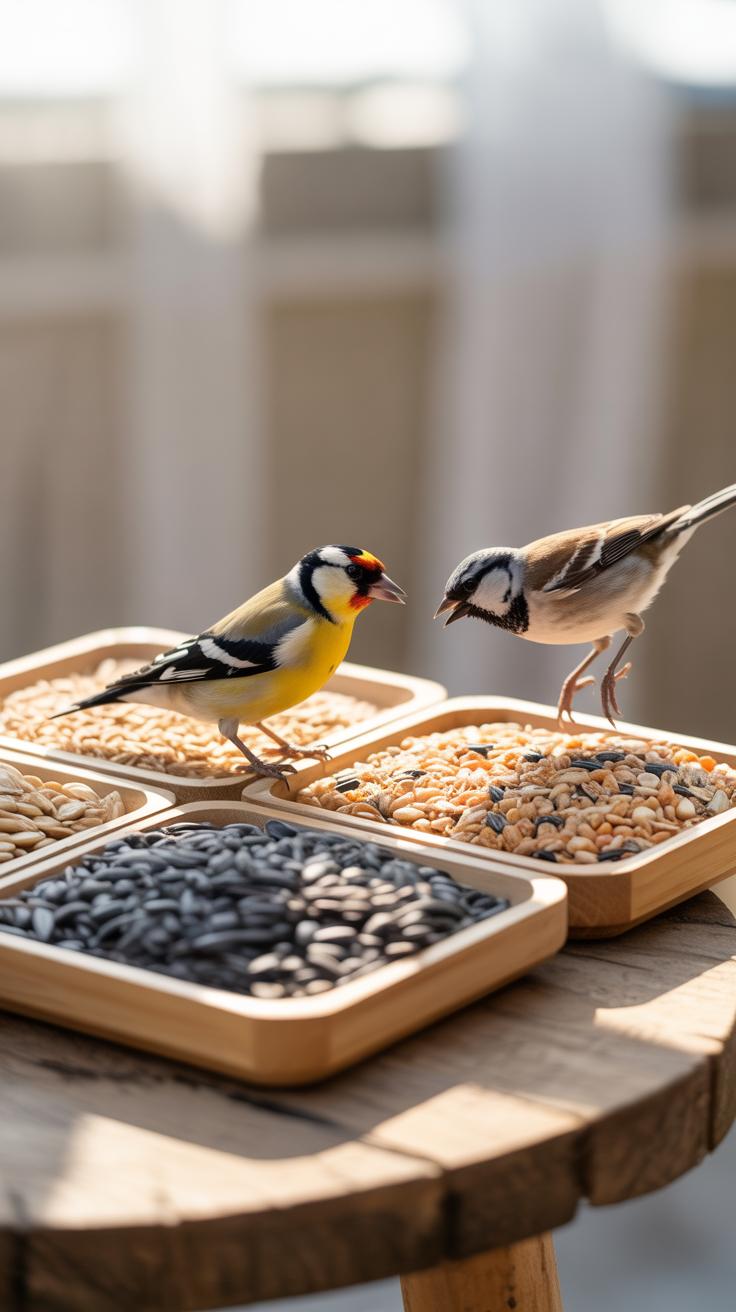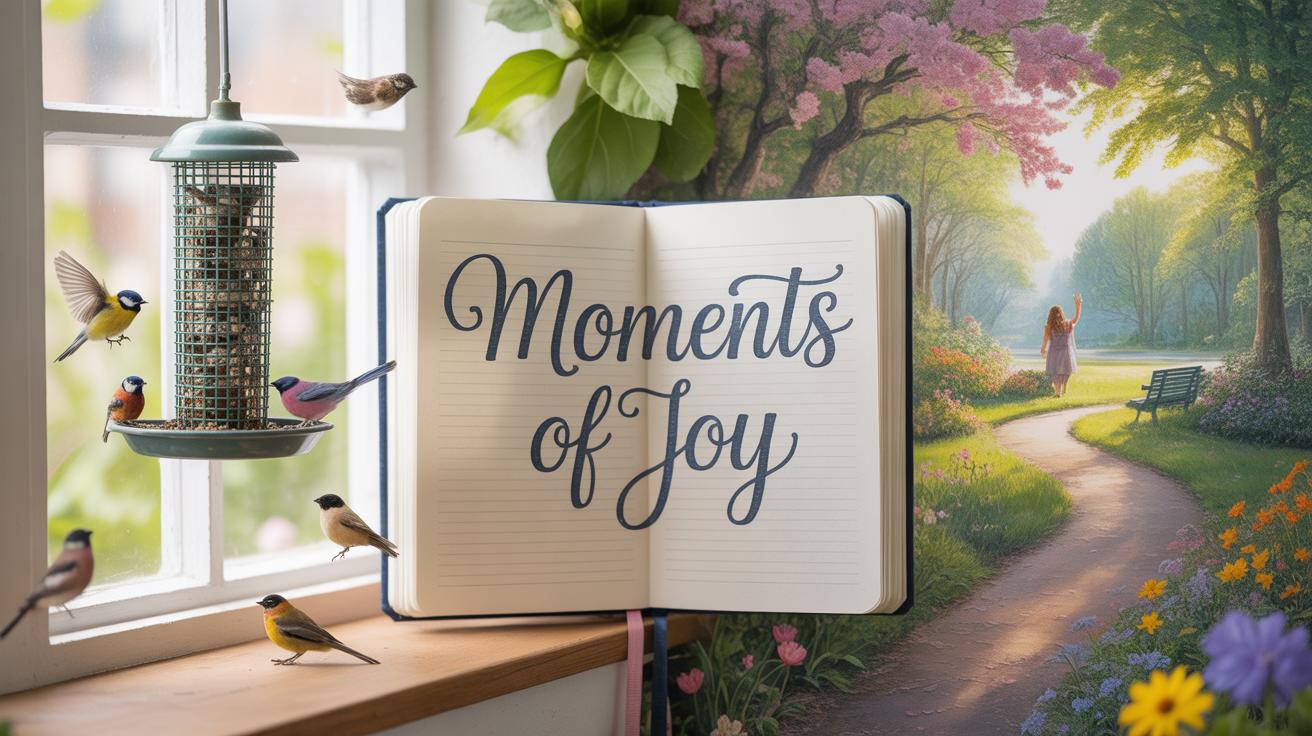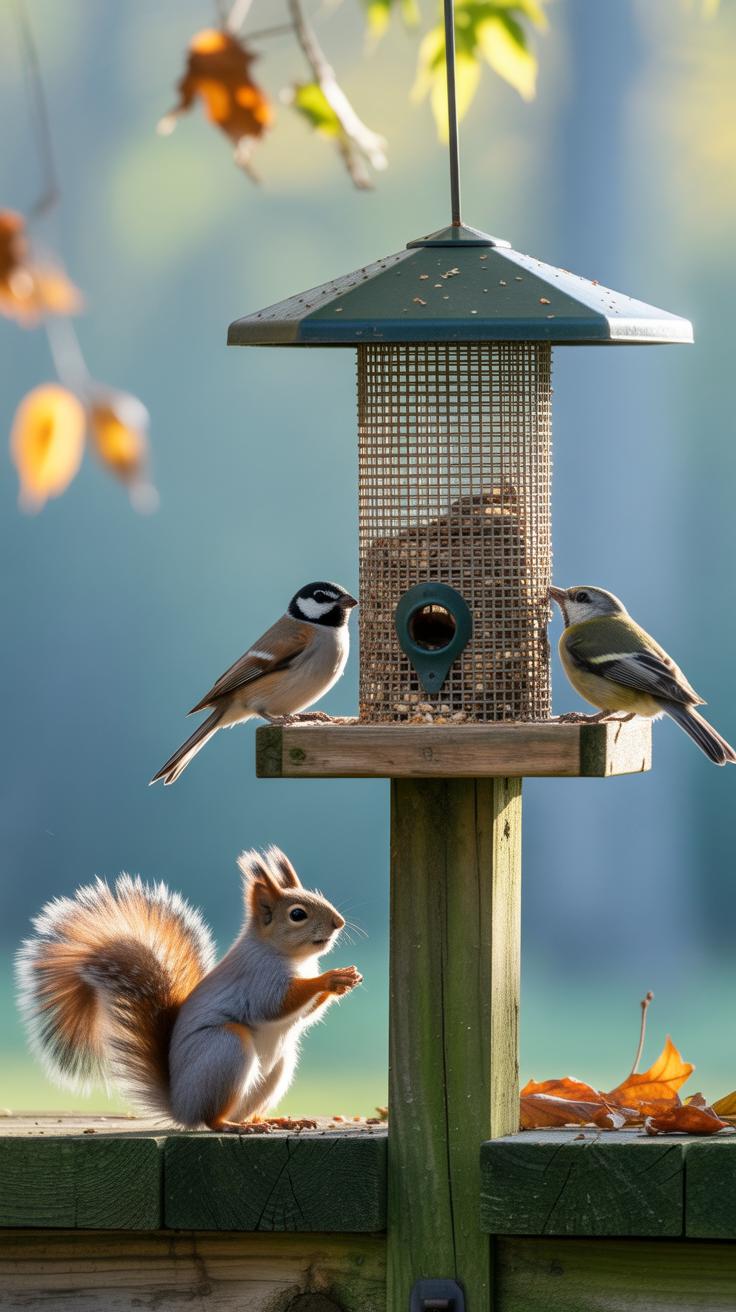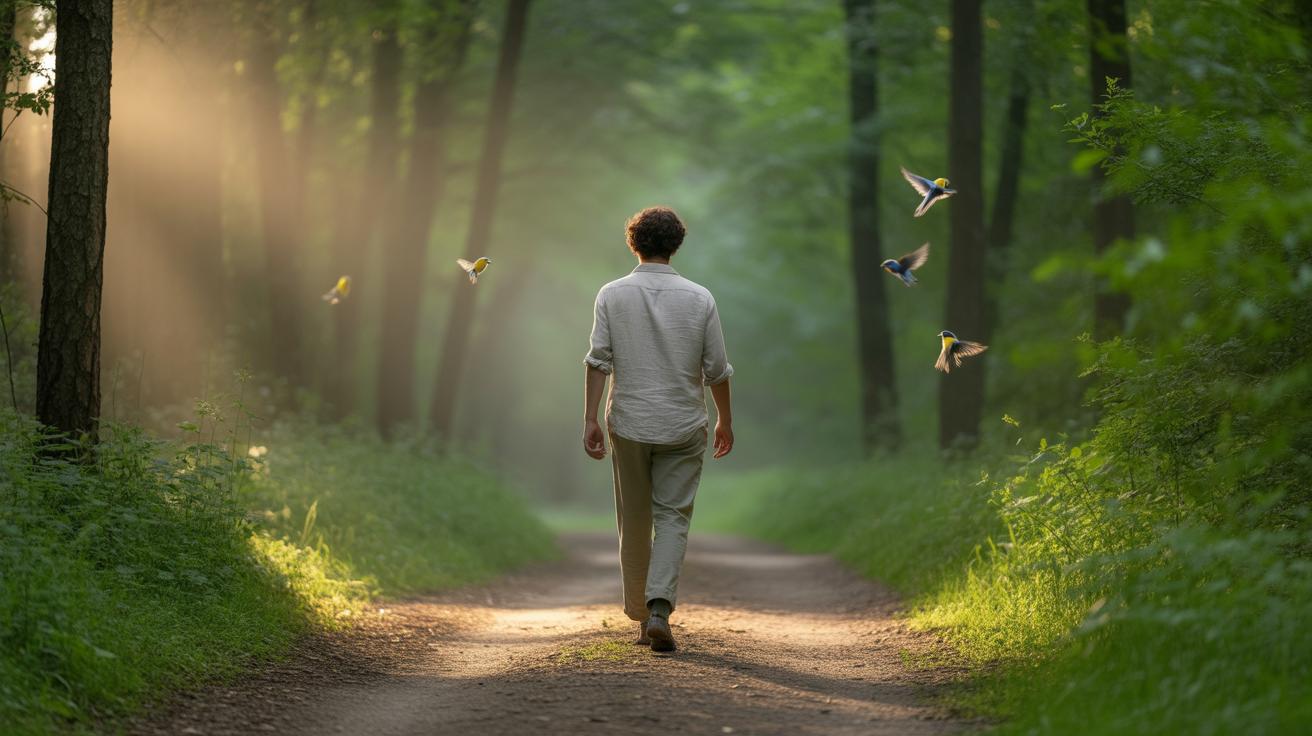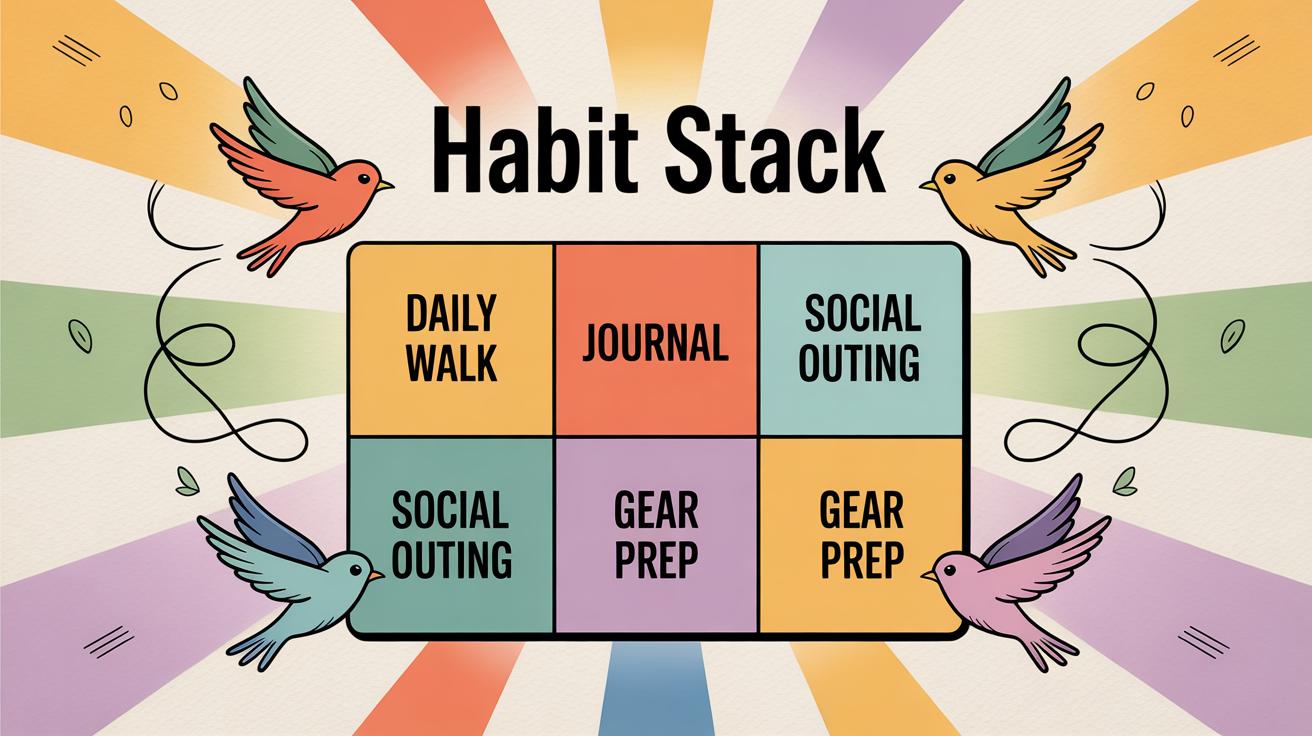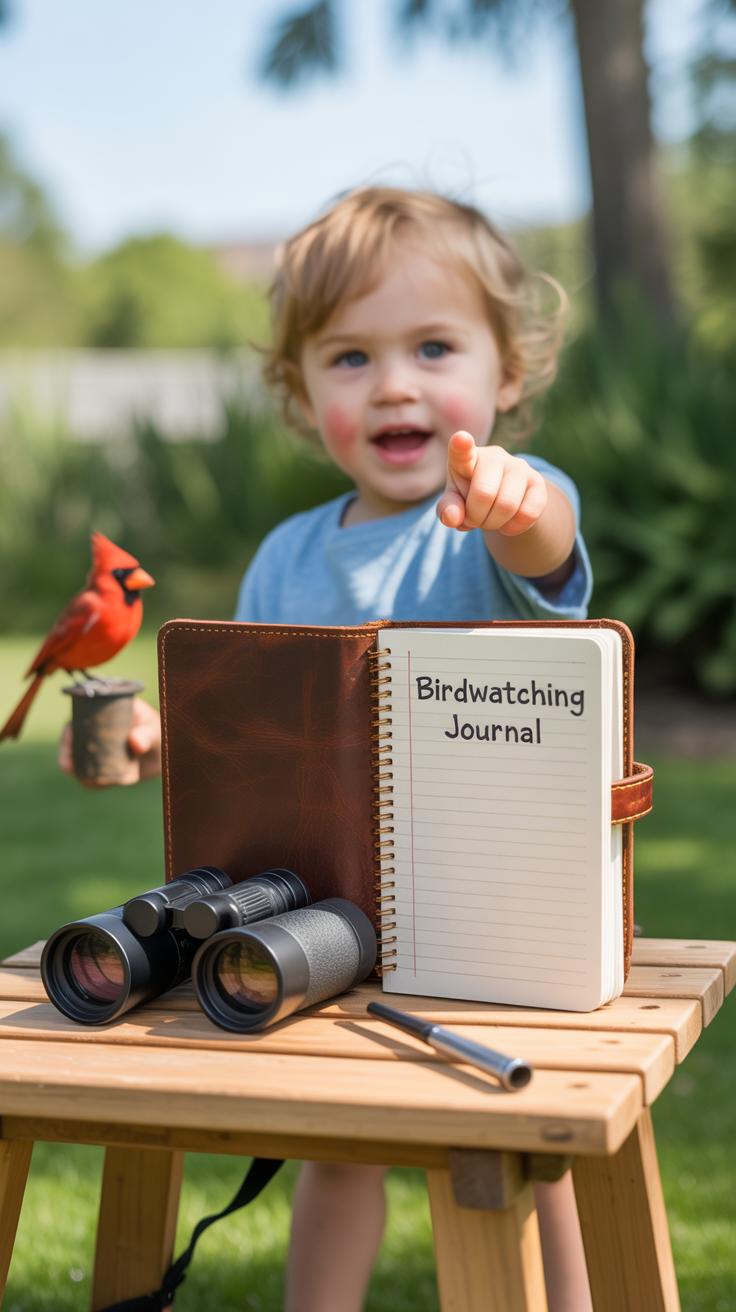Introduction
Bird feeders offer a simple way to enjoy nature and find calm moments in your daily routine. Watching birds visit your garden can turn a hectic morning into a peaceful start. This article explores how bird feeders can reduce stress and bring relaxation to your mornings.
Learn about different types of bird feeders and how to attract colorful birds to your outdoor space. You will discover easy tips to create a bird-friendly environment that offers both you and the birds a safe and welcoming place.
Understanding Different Bird Feeders
Bird feeders are simple yet fascinating devices designed to offer food to wild birds. Beyond just filling their bellies, feeders invite birds to your outdoor space, creating moments of connection and calm. Different feeders cater to different types of birds and food preferences. For example, seed feeders are common, often built with a container or tray to hold various seeds. They appeal to many garden birds like finches, sparrows, and chickadees, offering a straightforward way to watch lively visitors.
On the other hand, hummingbird feeders have a unique design, often featuring small feeding ports or red accents to attract hummingbirds. These feeders use liquid nectar instead of seeds, tapping into the birds’ preference for sweet, energy-rich food. Each type has distinct features based on the needs and habits of the birds it attracts, so choosing one depends on what species you want to welcome and how you want to watch them.
Seed Feeders for Common Garden Birds
Seed feeders often come in uncomplicated styles — think tube feeders with metal ports or simple tray feeders. They’re versatile and work with a range of seeds:
- Black oil sunflower seeds, popular with many songbirds
- Milo and millet, favorites for smaller birds
- Nyjer, perfect for finches
These seeds create a lively scene for those who enjoy watching various birds flit back and forth. I’ve noticed even small, plain feeders bring dozens of birds if placed in the right spot. Protecting seeds from squirrels is another story—it can be a bit of a challenge. Some feeders have weight-sensitive perches that close when squirrels land. Others come with cages or are hung where squirrels can’t easily reach. It’s a bit of trial and error, but worth it when you manage to keep those crafty creatures at bay.
Hummingbird Feeders and Nectar Solutions
Hummingbird feeders work differently. Instead of seeds, they hold a sugar-water nectar—basically, a mix of four parts water to one part white sugar. No need for fancy additives; plain sugar works best. I have to admit, it sometimes puzzles me how such a simple solution brings these tiny birds so reliably.
The feeders typically have small red ports that remind hummingbirds of the flowers they feed on. You’ll want to clean the feeder frequently because the sugar solution can ferment and spoil. It’s tempting to add honey or artificial sweeteners, but stick with sugar to avoid harming the birds. Watching them hover and dart can almost feel hypnotic, a gentle focus in an otherwise rushed morning.
How Bird Feeding Helps Relaxation
Watching birds visit a feeder can quietly shift your mood. There’s something about their gentle movements and bright colors that pulls attention away from worries. Birds don’t rush; they simply show up, eat, and move on, which can slow your own pace without much effort.
Studies have shown that observing nature—birds included—lowers cortisol, the stress hormone. So, when you find yourself tense in the morning, watching a few finches fluttering around might actually ease your mind. The simple act of looking out, seeing life happen, nudges you toward calmness without you even planning it. It’s like a small, natural reset button.
Birdwatching and Mindfulness
Birdwatching becomes more than just a hobby when you slow down to really see. It encourages mindfulness—a focus on the present moment that can be rare these days. When you watch a bird peck at seeds or flap its wings, your mind tends to follow, naturally quieting other, often noisy thoughts.
Trying to identify a particular bird might seem like a minor distraction, but it’s actually a way to keep your mind engaged and lessens anxiety. If you give it a chance, you might notice details you’d otherwise miss—patterns in feathers, a sudden hop, the melody of their songs—small stops that help steady breathing and focus.
Creating Calm with Daily Routines
Making bird feeding part of your morning ritual can anchor your day. Imagine stepping outside or sitting by a window each morning to fill feeders or simply watch the activity. It’s a moment just for you, a pause amid the buzz of day-to-day things.
- Set a consistent time for feeding. Routine can bring comfort.
- Keep a journal nearby to jot down bird sightings, which encourages observation and patience.
- Use this time to breathe deeply or even meditate while observing—melding activity with calm.
Some days, you may find yourself staring blankly, but that’s okay. The routine itself can become a source of stability even if the relaxation isn’t instant. Over time, these small moments might build up, making mornings a little easier, a little quieter.
Best Locations for Bird Feeders
Placing your bird feeders in the right spots changes everything. You want to draw in the birds, sure, but also keep them safe and comfortable. It’s a bit of a balancing act, actually. You’ve probably noticed how birds can get spooked easily or, worse, hurt themselves around glass surfaces.
Avoiding Hazards and Maximizing Visits
Put your feeders at least three feet away from windows or use special decals if space is limited. Birds don’t see clear glass well and often fly straight into it. This simple move can save many lives. Also, think about nearby cover—shrubs or dense plants—where birds can quickly hide if a predator lurks. Placement near these natural screens encourages more frequent visits since birds feel safer.
Oddly enough, too open a location might attract birds but leave them exposed, and they might avoid coming back. The mix of easy access and nearby hiding spots seems to work best.
Using Poles and Trees for Feeder Placement
Mounting feeders on poles can keep squirrels at bay, especially if you add a baffle below. Poles also let you pick spots away from windows and near bushes. Trees offer a natural perch and shelter, but watch out—squirrels love those, too. If you do attach feeders to trees, try hanging them on thinner branches that squirrels find tricky to reach.
One thing I’ve noticed is that if feeders hang too close to branches, squirrels can jump straight onto them, taking over your bird buffet. At the same time, birds appreciate the natural feel of trees, which might encourage longer visits. It’s a bit of give and take. Depending on your garden, you might want both options or experiment a little.
Have you found a spot around your home where the birds just keep coming back? Sometimes those little adjustments in placement make your mornings noticeably calmer.
Choosing Seeds and Feed for Your Birds
Picking the right seeds for your bird feeders isn’t just about tossing out any mix you find on the shelf. Different birds have their preferences, and feeding them what they like can bring you more variety—and more visits. Plus, when birds eat the proper foods, they tend to stay healthier, which means you get to enjoy watching them longer.
Black oil sunflower seeds are a solid go-to. They’re popular among many songbirds like cardinals, chickadees, and nuthatches. These seeds have thin shells, making them easier to crack. Interestingly, some people expect all sunflower seeds to be equal, but this type really stands out. Millet tends to attract smaller birds like sparrows and juncos. It’s often found in mixes labeled as “birdseed,” but if you want particular birds, you might consider buying it separately.
You might wonder about the more specialized food options. Niger seed, for instance, is a favorite of finches. I found that when I added it to my feeders, goldfinches showed up more often. Then there’s hummingbird nectar—a simple sugar water solution—that helps these tiny birds keep their energy up. It’s worth experimenting with different foods to see who visits your yard. After all, your experience with feeders may shift with each season, or even week.
Protecting Your Bird Feeders
Squirrel-Proof Feeder Designs
One common struggle many bird enthusiasts face is squirrels or larger birds taking over feeders meant for smaller guests. It’s a bit tricky because these clever critters seem to find any way in. Still, some feeder designs can help keep them at bay.
Weight-sensitive feeders react to the weight of the visitor; when a squirrel hops on, the feeding ports close, denying access. These are quite clever and often quiet, letting smaller birds feed without much interruption. Then there are metal cages surrounding the seed ports. The cage gaps are just right for tiny birds but too small for squirrels or large starlings. These cages can feel a bit like overkill, but they do work if the squirrel problem is persistent.
You might find that no design is foolproof all the time. Squirrels are surprisingly persistent! Sometimes, it takes swapping feeders or placement strategies—like hanging feeders on poles with baffles—to really keep them out. The key is patience and trying what fits your space best.
Maintaining Cleanliness to Keep Birds Safe
Clean feeders aren’t just about looks; they’re about health. Mold and yeast can quietly build up, especially in nectar feeders for hummingbirds. Changing nectar every few days is usually enough to keep it fresh. I’ve noticed that letting old nectar sit even a day too long can attract unwanted bacteria, making birds sick. That’s something you definitely want to avoid.
As for seed feeders, cleaning them monthly with warm water and mild soap reduces harmful germs. Avoid harsh chemicals that might linger and harm delicate birds. Drying feeders completely before refilling also helps stop mold growth.
Regular focus on cleanliness might seem like extra work. But when you watch smaller birds feeding calmly and consistently, it feels worth it. And, relatively speaking, it’s a simple way to make your mornings a little more peaceful.
Creating a BirdFriendly Garden
Planting native shrubs and flowers near your feeders can really change how often and what kinds of birds visit. These plants have evolved alongside local birds, offering familiar food sources and shelter that non-native species often can’t provide. Think of plants like serviceberry or chokecherry—they not only produce berries but also attract insects, which many birds rely on.
Besides food, dense shrubs like elderberry or dogwood create hiding spots. Birds need places to escape predators or to rest between visits to feeders. Sometimes I’ve noticed smaller birds zipping to a bush the moment a larger bird shows up at the feeder—like their own little safe zone.
Using Plants to Provide Shelter and Food
Some plants are dual-purpose. For example, native conifers keep birds warm during colder months and offer seeds that some species love. Others, like milkweed or coneflowers, attract insects and provide natural food. You might find cardinals hopping between these plants. It’s a kind of ecosystem right in your yard.
Besides food, the structure of plants matters—a mix of tall trees, mid-sized shrubs, and ground cover helps different species find suitable spots. You don’t have to transform your garden, just plant a few strategic patches, and watch the visitors multiply.
Water Sources and Safety Measures
Birds need fresh water as much as food. A clean bird bath offers a much-needed stop to drink and bathe. I usually change the water every day or two, especially in warmer months to avoid mosquitoes or algae buildup. You could even add a small fountain or dripper to attract more attention; birds like moving water.
Safety around these water spots matters too. Keep baths away from places where cats or other predators can hide. Also, position bird baths near shrubs or trees so the birds can quickly retreat if needed. This balance encourages more frequent visits without the constant stress of danger.
Watching Birds and Tracking Visitors
Watching birds around your feeders can turn quiet mornings into something unexpectedly engaging. Noticing the different visitors, their shapes, colors, and behaviors adds a new layer to your garden’s life. Maybe a bright red cardinal drops by, or a shy sparrow flits in and out—each species tells its own story. Keeping track of these visitors not only makes feeding birds more interesting but can help you tweak your setup to attract even more varieties over time.
Simple Birdwatching Tips
Try to watch without making much noise or quick movements; birds are sensitive and can easily get spooked. Find a spot where you can sit comfortably, maybe behind a window or a bush, and just wait. Jot down what you see: the colors, size, and behavior. Do they feed alone or in groups? What time of day do they come? Writing down details makes each visit feel richer, and you might spot patterns you’d never noticed otherwise.
Using Technology for Better Viewing
If you want to take it a step further, consider setting up a small camera near your feeder. It captures moments you might miss, like a quick visit or a rare species showing up briefly. Bird identification apps can help too—they’re handy if you’re uncertain about a particular visitor. Sharing your sightings with other bird lovers online can add a whole new social element to your hobby, though sometimes it feels more rewarding just to keep those little secrets to yourself.
Troubleshooting Common Problems
Keeping Feed Fresh and Safe
Bird seed left out too long can quickly spoil, especially when damp or humid. Mold grows fast, and no bird wants to eat that. To keep things fresh, store your seeds in airtight containers away from direct sunlight. I’ve found that even a plastic bin with a tight lid works well. It’s a bit tempting to just refill feeders from old seed, but old, clumpy seed not only deters birds but invites mold and pests.
Replacing seed every few days is a good rule of thumb. During wet seasons, you might want to check feeders more often. A simple rinse and dry of your feeders every couple of weeks also helps. Yes, it’s a bit of extra work, but it keeps the environment safe for the birds and avoids nasty surprises like sour smells or strange bugs appearing around your feeding spots.
Dealing with Unwanted Visitors
Ants, bees, and aggressive birds do show up uninvited quite often. Trying to keep ants at bay is a common struggle. A trick I use is placing feeders on poles inside shallow dishes of water—essentially a moat. It’s not perfect, and some ants might still find their way, but it often helps slow them down.
Bees get attracted to sugary supplements or nectar feeders. If they become a nuisance, try moving feeders a bit further from seating areas or switching types of feed. Aggressive birds can scare off smaller, friendlier visitors. You might try spacing your feeders apart or using designs that limit perching space for larger birds. It’s a bit of trial and error, honestly, but simplicity often wins. The main thing is to keep watching and adjust rather than give up when problems pop up. After all, the goal is calm mornings, not a constant battle.
Conclusions
Placing bird feeders thoughtfully encourages birds to visit your garden regularly. This connection with nature can help ease your mind and provide a relaxing start to each day. The choice of feeder and seeds plays a key role in attracting a variety of birds.
Taking care of your feeder and watching birds is a quiet activity that invites calm and joy. By creating a small refuge for birds, you also create a personal space for calm mornings and less stress. Your garden can become a peaceful retreat with the right bird feeders.

